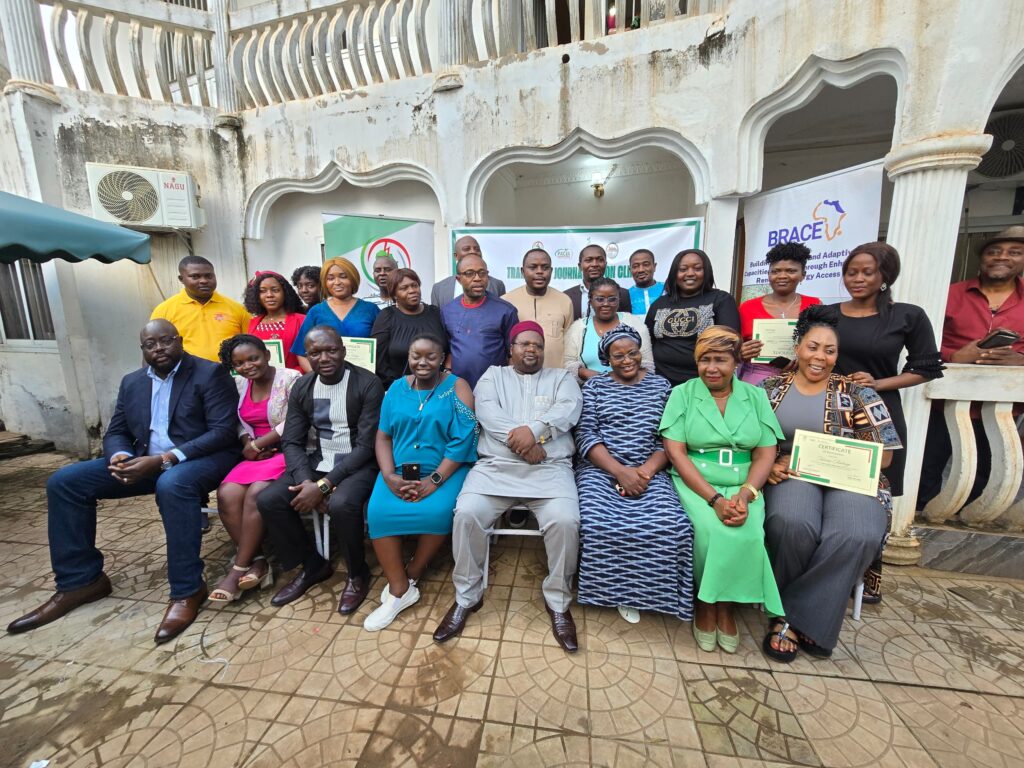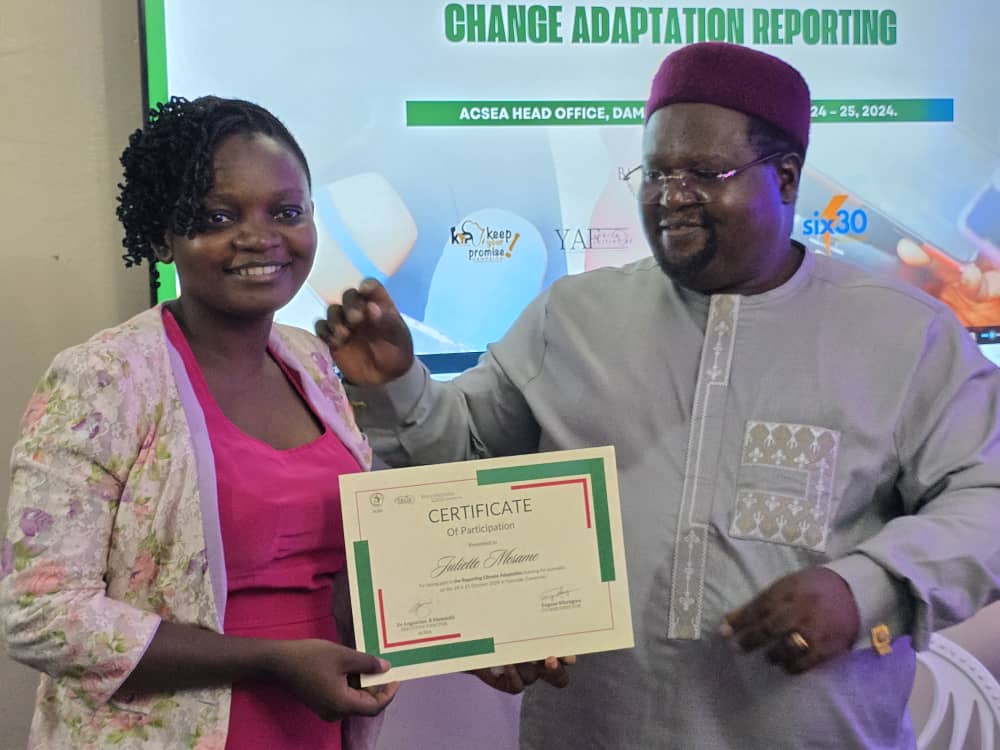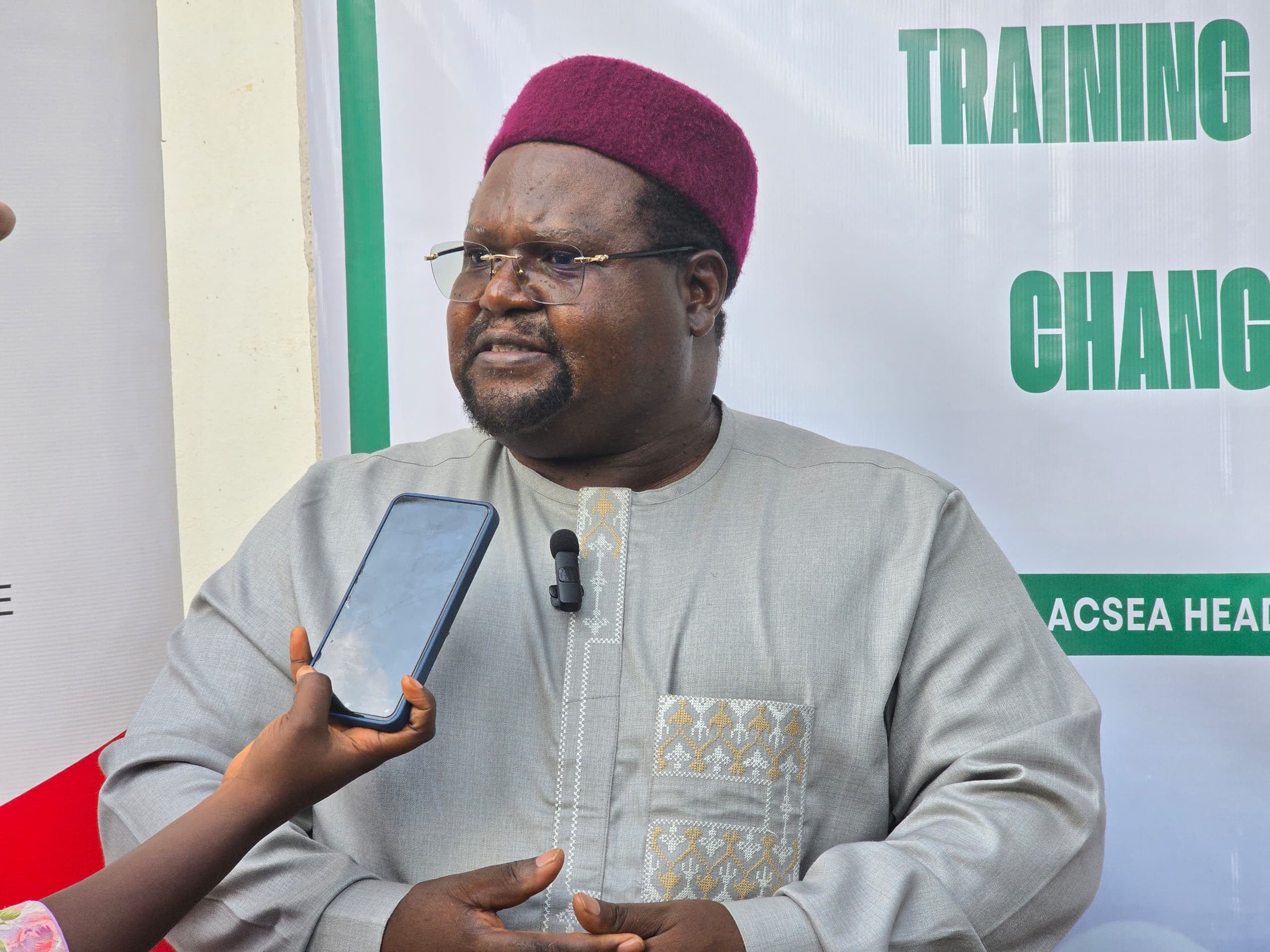Dr. Augustine Njamnshi, Executive Director of the African Coalition for Sustainable Energy and Access, ACSEA (an alliance of various organizations drawn from the civil society (CSOs), business/private sector, academia, and research institutions promoting renewable energy, energy transformation, and access in the continent of Africa, hosted by the Pan African Climate Justice Alliance, PACJA), ahead of the 29th Conference of Parties, COP29, set for Baku in Azerbaijan, has revealed that finance would be one of the key talking points. The focus would be on the New Collective Quantified Goal on Climate Finance (NCQG), a new global climate finance goal that the Conference of the Parties serving as the meeting of the Parties to the Paris Agreement (CMA) shall set from a base of USD 100 billion per year before 2025. The ACSEA boss during the training on climate change adaptation reporting for journalists spoke about climate financing and clean energy in an interview with Leocadia Bongben. Read the excerpts:
Cameroon Factfinder: What was the essence of this training for journalists?
Dr. Augustine Njamnshi: We want to make climate change and climate justice principles more understandable to everyone. You cannot overlook the importance of journalists and communicators in making things simple for people to understand. However, they may only pass on information that impacts people’s lives if they grasp the issues. This is a continual operation, and we intend to embark on training as frequently as feasible, targeting as many pressmen and women as possible. Some concepts are poorly understood. The reason for holding this workshop is to help journalists comprehend more easily.
Climate financing was one of the most important topics. What aspects of climate financing do journalists misunderstand?
When developing countries demand means of implementation, such as finance for climate action, it is interpreted as begging, which is not the case. The Paris Agreement’s Article 9 defines climate finance quite clearly. Climate financing, also known as means of implementation, refers to monies provided by developed country parties for climate action in underdeveloped countries. So, if we don’t understand who is responsible for providing climate funding, as well as the quality, quantity, and timing, in that circumstance, people may believe that calling for climate financing is the same as asking for charity. Climate finance differs from aid and other forms of development support. Countries that have made small contributions to the repercussions of climate change are adapting. Logically, people who caused the problem should fund the adaptation in developing countries. They have the resources and should provide the finances.
What is the link between climate financing and climate justice?
Climate justice ensures that no one, wherever, suffers from the effects of climate change. Climate injustice occurs when some people in developing nations, particularly on the African continent, endure the repercussions of climate change and are not encouraged to take climate action, particularly adapting to climate change. And this is what we are fighting against. So far, climate action and climate finance have primarily focused on mitigation. That is sad because adaptation is essential. The Paris Agreement makes it clear that mitigation and adaptation are equal. Developed countries focus on mitigation and, as a result, provide mitigation financing while ignoring adaptation action and finance.
From Copenhagen to date, the developed countries are not providing the money. Are you optimistic about the situation that can change?
I am positive. Since 2019, the average person should have been disappointed and pessimistic. Trillions of dollars were deployed in just a few months to combat COVID-19. This is because not only Africans but everyone was killed. As a result, my optimism stems from the idea that money exists someplace. We will continue to advocate until the necessary people adapt and release climate finance.
Africa has an energy transition need. Do you think we can succeed? We can succeed. To accomplish this, we need both political will and resources. This is because Africa has a concentration of renewable energy raw material resources and endowment, particularly in Sub-Saharan Africa. So, from that standpoint, we are already on solid ground for transition. Our suggestion to African governments and people is that rather than becoming locked in something that will become obsolete in the next few years, there is a need to refocus your growth route, even if you are not receiving funding, to go into energy for the future. Investing in fossil fuels is costly; an oil refinery costs billions of dollars to develop.
Meanwhile, the use of oil and gasoline may become outdated within the next decade. Without investment, we will be left with the existing infrastructure. We believe we should explore transitioning to energy in the future. Again, sustainable or renewable energy is energy that is designed to be decentralized and people-oriented. If you travel across Cameroon to some remote areas, you will come across communities lit 24 hours a day because the government has established a project to put solar electricity in local hamlets and villages. With the national grid, this has not been easy. Cable lines can stretch from Bafosam to Nkambe, Fumban to Magwa, and other areas. However, people can go months or even years without electricity, as in Nigeria. Assume they had those solar farms in every community.
We are asking our governments to consider that growth path, not merely to combat climate change, because Africa’s emissions, including North and Southern Africa, are quite little in comparison to world emissions from fossil fuels. So, when we advocate for a transition to sustainable or renewable energy, it is not for mitigation purposes. We’re doing it mostly because there is energy that can be decentralized and people-centered and reach the last mile, whether in isolated or established areas. We must abandon fossil fuels in favor of a more sustainable development route. Again, we don’t have to let the developed countries off the hook because they have to support us to take that development pathway; they cause the problem.
I wanted to ask, if we need to evaluate Cameroon’s renewable energy, at what level are we here?
I can’t say because I don’t want to take that risk. Currently, we are compiling a document on Cameroon’s energy policies and regulations. The work is quite advanced, and it is part of our study about Cameroon. But from a layman’s point of view, I think Cameroon is in the right direction.
In the right direction, can you say, is there any one project that has worked in that energy transition?
I am talking here as a citizen of this country because of what I have seen. I’ve seen whole villages in the Far North, West, and South lit by renewable energy.
Some people feel like it’s almost a waste of time going to the Conference of Parties every year with little results. Do you think it’s vital to continue fighting?
While I understand why some say we should abandon the COP negotiations, I believe that we never fight and flee. Because if you battle and flee, you will have to fight again tomorrow. At that time, you will be facing an uncontrollable creature. Copenhagen, for example, was known as the Copenhagen failure. That was COP15. But do you know what? Imagine we weren’t battling. We could have been worse. So we learned the hard way that you have to be present.
A look at loss and damage, for example. We began the struggle before 2012. Loss and damage were traditionally considered synonymous with adaptation. When we first started pushing for loss and damage to be a stand-alone bargaining pillar, it appeared to be extremely tough. But, as we persisted, we eventually got the Warsaw Plan of Implementation and the Warsaw Mechanism on Loss and Damage, and then it happened. By COP28 in Dubai, the Loss and Damage Fund had been established and operationalized, even though the money put there is, for the time being, insufficient to meet the needs. But at least we have a fund. As a result, minor accomplishments must not be overlooked. Assume that we gave up. Although it is tiring and sometimes very frustrating, I must confess that we can’t stop fighting.
Going towards Cup 29, what are the key messages you’re taking to Cup 29 for energy?
COP28, for example, was a watershed moment in energy since it was recognized that the world must transition away from fossil fuels. One of the most important decisions was to phase out fossil fuels. That was a huge success in COP28. What we’re bringing to COP 29 in terms of energy is our belief that renewable energy or sustainable energy should not only be used for mitigation but that we cannot be resilient and adaptable in a continent like Africa without access to affordable, clean, and efficient energy systems.
The 6/30 campaign, chaired by Lady Joyce Bande, former Malawi president, was launched in Addis Ababa early this year to satisfy the energy needs of about 613 million people in Sub-Saharan Africa who do not have access to any type of electricity, clean or dirty. These needs must be met. And individuals should start allocating resources, both financial and technical, to ensure that Sub-Saharan Africa, for example, has access to energy.
Africa is the darkest continent. Sub-Saharan Africa is particularly poor in energy. That is why we are pursuing this agenda of financing energy for adaptation and resilience building in Africa. We need to discuss the $100 billion introduced in 2000 as a firefighting measure because it was not based on any evolution. We now know what adaptation and mitigation measures are required, and the total cost exceeds $100 billion. We should be able to put up some strong numbers after relying on them for the past few years. So, in some ways, we see COP 29 as a financial COP. It will influence what occurs from 2025 onwards. Unfortunately, when we went to Germany for the intercessions in June, developing countries, Africa in particular, were asking for the amount that will be the new quantified finance goal post-2025. And nobody wanted to talk about it, which is already not a very good sign. However, we remain hopeful that the conversations required by the Paris Agreement will take place in COP 29. This is one of the things that we want to take very seriously.



